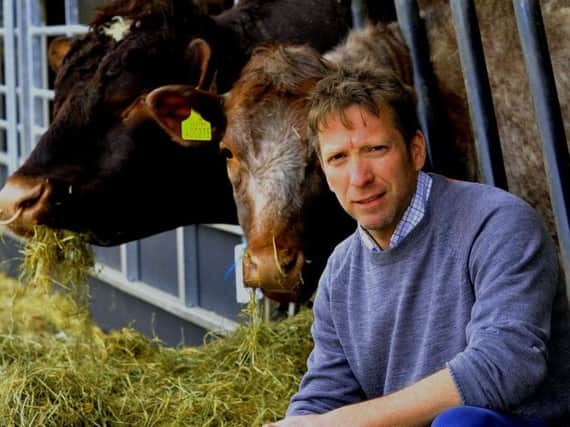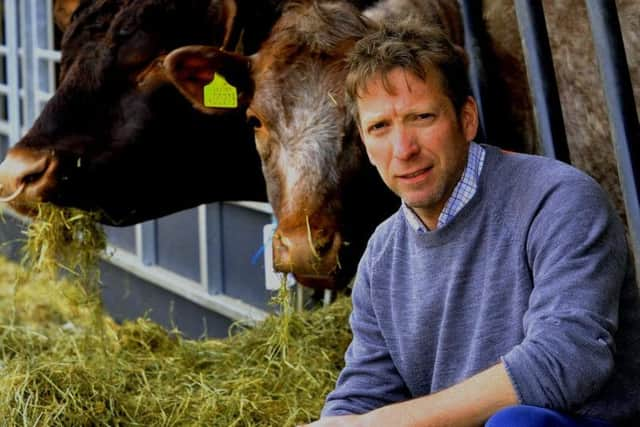Yorkshire vet Julian Norton deals with a cow that 'pings'


Evening surgery had just finished, so I grabbed what extra equipment I thought I might need – not just for Tom’s cow, but for the rest of the night ahead as well. It is impossible to predict what a night on call might bring, so it is best to be prepared.
The signs that Tom reported over the phone sounded serious but it was hard to tell what the problem might be. All poorly cows go off their food and, quite quickly, look very sick. However, the fact that Tom was sufficiently worried to call me out in the evening was evidence enough that she was in a bad way.
Advertisement
Hide AdAdvertisement
Hide AdAnd in a bad way she certainly was. The poor cow looked sick even from the far end of the collecting yard, where I parked my car. Her ears were droopy and so was her demeanour.


I greeted Tom, who looked tired and worried – it had been a long day and one that was far from over. The three most important questions to ask to a dairy farmer about a sick cow (vet students take note) are: When did she calve? How much milk did she give this morning? Did she eat her cake? This is not some Marie Antoinette-type interrogation, but a reference to whether the cow ate her breakfast (yes, cows eats cake for breakfast!).
Advertisement
Hide AdAdvertisement
Hide AdArmed with this information, alongside a thermometer, a stethoscope and a lubricated rectal glove, a large animal vet can usually work out, with some confidence, what is wrong with a bovine patient. In a world crammed full of technology, it is a pleasant experience to diagnose an illness using a clinical history and a stethoscope. And it wasn’t long before I’d made my diagnosis.
This cow had calved just a couple weeks ago, she had not eaten her cake for breakfast, she’d been fine after calving but her milk had dropped off over the last couple of days. Her temperature was normal, but it was my stethoscope that gave me the answer. I placed it on her left flank to listen for rumen noises – there were barely any. I moved it lower down and flicked her muscular flank with my index finger, listening intently for the noise that would confirm my suspicion. Sure enough, there was a classic pinging noise, just like the noise you would get if you flicked the side of a metal drum, half full of water.
“PING, PING, PING,” went the cow’s left flank, each time I flicked it. The cow had a left displaced abomasum. Everything fitted in and, if I’m honest, I thought that this was a possibility as soon as I’d asked those first three questions. An abomasum displaced to the left is a condition that can affect recently calved cows. The abomasum – the fourth stomach of the cow – gets stuck behind the rumen, during the abdominal upheaval that occurs during and after calving. It should sit on the right, in the lower part of the abdomen but, trapped in the wrong place, it fills with gas and makes the cow poorly. The trapped gas and stomach fluid is the cause of the ping.
Advertisement
Hide AdAdvertisement
Hide AdI explained the situation – and what I needed to do about it – to Tom. Experienced as he was, he hadn’t seen this problem before so, before I reached for the local anaesthetic and my surgical kit, I set about talking through, in detail, what was about to unfold.
The new series of The Yorkshire Vet continues on Tuesday at 8pm on Channel 5.